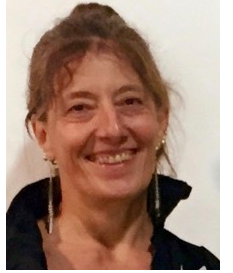 Scene: A comfy lecture hall in the temple on the summit of Mount Olympus. The feminist historians have taken their seats. The eldest Olympians rise to speak. Let us attend to their words.
Scene: A comfy lecture hall in the temple on the summit of Mount Olympus. The feminist historians have taken their seats. The eldest Olympians rise to speak. Let us attend to their words.
I am Hera, Queen of All, Daughter of Gaia, Daughter of the Great Mother, whose body is our holy earth, whose bodily fluids are our springs and oceans, whose mind is our precious air and holy fire. I am Mother of the Fates, Sister of Hestia, protector of homes, and sister of Memory, whose daughters are the Muses, sponsors of our culture. I live in contentment with my wife, Zeusina.

I am Zeusina, Co-Queen of All, Wife of Hera, Co-Mother and Sacred Guardian of all lands. You’ve heard the stories of that rapacious lecher who usurped my place? Don’t believe them! That dirty dog stole my throne, my wife, and even my name. Now one of my constant duties is to battle against the armies that are invading our peaceful lands and bringing their thunder-gods to cast us down and stand in dominion over us. The generals of those armies are bringing ruin and desolation to our lands and cities. Another of my tasks is to correct the stories the speakers for the thunder-gods tell. I rescue young women like Leda and Danae and Europa from their greedy fathers, who would sell them to the highest bidders. So many young women have I had to rescue!
I am Poseidis, Queen of Waters. When I was young, I swam and played with mermaids and seals and dolphins and whales. Now I find I must protect them from the ravages of royal navies and ruthless fishermen. I spend my days and nights working to clean up after the careless men who discard their trash in my waters. I yearn to swim and play again. Can you help me clean our waters?
I am Demeter, Queen of Crops and Farmlands. You perhaps know the story of my daughter Persephone. Men have told how she was kidnapped by my little brother, Hades. Don’t believe it! She went to visit the lands beneath the earth because she could hear the crying of souls caught in boredom in the Elysian Fields. She visited them to sing to them and to teach them to protect and fertilize the roots of plants that grow on the surface of the earth. Friends, let us work to save our lands from harm. And let us always celebrate Our Holy Mysteries.
I am Athena, Queen of Holy Wisdom. From my birth among the Amazons of Libya and my childhood among the Amazons who live near the Black Sea, I have sought learning and inspired humans to think and write. You have no doubt heard of my so-called friendship with Odysseus, that hubristic king of such a tiny island. Don’t believe what you’ve read about him! My perpetual chore is to cleanse him of that sneaky cunning and to teach him to be friendlier to the people he meets in his travels. Actually, he needs to stay home with his family.
I am Apolla, Queen of Music and Sunlight. When your day is bright and the sun is shining down upon you, think of me. When you hear a lyre or a lute or a guitar, think of me. I invented all musical instruments, and my greatest joy is the symphony orchestra. Perhaps you’ve heard the tale about how I “conquered” Delphi and took over the oracle? Don’t believe it. Like her sister sibyls, the oracle was growing elderly. I went to help her interpret some obscure riddle and liked that vale so much I bought a timeshare and now spend much of my time there. The oracles and I are aging gracefully together.
I am Ares-ma, Queen of Armies. I am so angry! Warriors should not be mercenaries working for greedy kings. They should be honorable explorers. I am so angry that kings prefer to abandon justice and their goddess-given healing touch and sit on higher and mightier thrones. I am so angry at the armies and their thunder-gods that all I want to do is fight against them and defend our ancient mothers against their burning weapons. I am so angry!
I am Aphrodite, Queen of What Is Best of Love. I am the Great Creatrix of gardens and landscaping. I inspire your poets and bring colors to your world. You’ve no doubt heard about my so-called girdle. Well, it’s really just a fancy golden belt. It’s supposed to strike men and women with profane love, to make women surrender to godlets and men who think they’re gods. Don’t believe it! I use my belt to draw magical borders between peaceful realms and teach humans about compassion and charity.
I am Hephaestia, Queen of Forges and Crafts. I have taught people to fashion metal into works of art…but some turned my lessons inside out and used my forges to create weapons. Oh, shame upon them! Do you engage in any craft? The roots of all crafts lie in my smithy, and I teach humans to do clever things with ordinary materials. We bring beauty to the world.
I am Hermia, Queen of Written Languages, Messenger between the divine worlds and the ordinary ones. You’ve heard the old tales that “Hermes” and his son Autolycus are thieves? Well, maybe they were, but I am not…well, sometimes I borrow things to show to humans and give them pleasure. I am forever speeding with messages between the worlds and lands. So much fun!
I am Dionysia, Drama Queen. Oh, yes, indeedy…I invented drama. Plus tragedy and comedy. That was when someone told me about consensual reality and I found it soooo boring. Let’s have our stories acted and sung and danced on stages (which I also invented). Let’s have elevated reality and great festivals. Hooray for Shakespeare, Moliere, and Chekhov. And the Gershwins and every performer who’s ever stepped on a stage and brought entertainment to the people!
Note: This bit of nonsense woke me up at 4:00 this morning. I’m pretty sure I wasn’t dreaming. Voices in my head? Who could resist? They were telling me that most of the Greek myths we’re familiar with are patriarchal fantasies. So there, Robert Graves—you’ve written the phallocentric versions. Now it’s our turn.
Barbara Ardinger, Ph.D. (www.barbaraardinger.com), is a published author and freelance editor. Her newest book is Secret Lives, a novel about grandmothers who do magic. Her earlier nonfiction books include the daybook Pagan Every Day, Finding New Goddesses (a pun-filled parody of goddess encyclopedias), and Goddess Meditations. When she can get away from the computer, she goes to the theater as often as possible—she loves musical theater and movies in which people sing and dance. She is also an active CERT (Community Emergency Rescue Team) volunteer and a member (and occasional secretary pro-tem) of a neighborhood organization that focuses on code enforcement and safety for citizens. She has been an AIDS emotional support volunteer and a literacy volunteer. She is an active member of the Neopagan community and is well known for the rituals she creates and leads.



 Scene: A comfy lecture hall in the temple on the summit of Mount Olympus. The feminist historians have taken their seats. The eldest Olympians rise to speak. Let us attend to their words.
Scene: A comfy lecture hall in the temple on the summit of Mount Olympus. The feminist historians have taken their seats. The eldest Olympians rise to speak. Let us attend to their words.
 Artwork and sustainable agriculture are the two threads of my professional life. They mingle fruitfully beneath the surface as I sift through remaining evidence of ancient worlds, trying to sense how people of lost cultures met basic survival needs and also how they responded to the very human hunger for beauty, meaning, and story.
Artwork and sustainable agriculture are the two threads of my professional life. They mingle fruitfully beneath the surface as I sift through remaining evidence of ancient worlds, trying to sense how people of lost cultures met basic survival needs and also how they responded to the very human hunger for beauty, meaning, and story.



